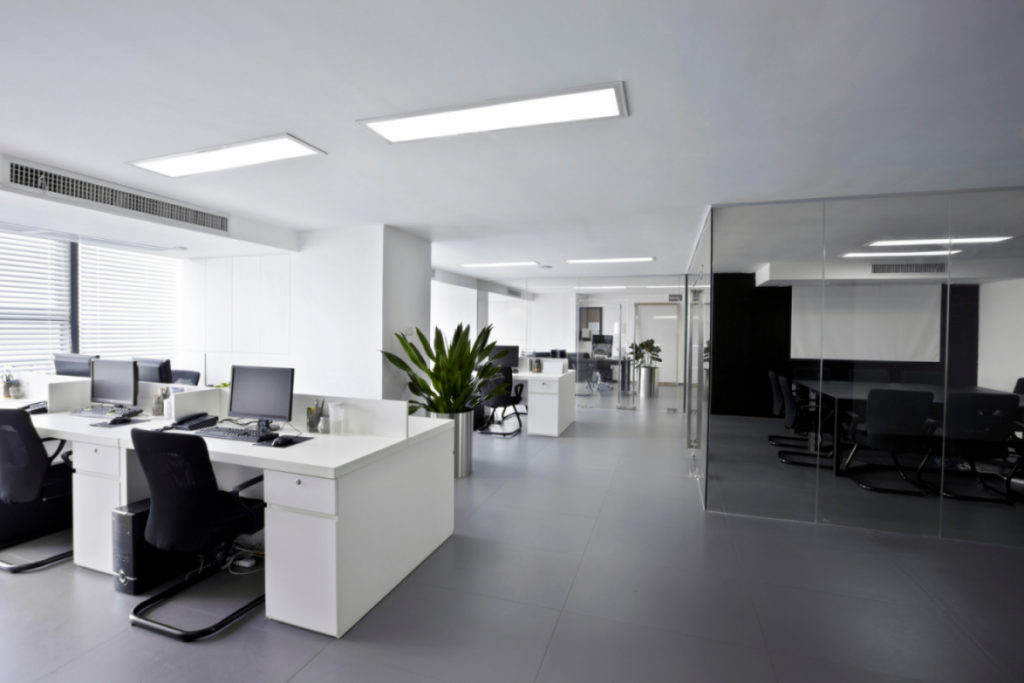Light has a significant role to play in creating the aesthetic characteristics of a workplace and has a direct influence on human health and wellbeing.
Lighting quality depends not only on the nature and function of the space being illuminated, but also other multiple factors, such as brightness, the time of day, the reflectivity of surfaces and glare from objects such as computer screens amongst other things.
We hope you will excuse the pun, but light and lighting are more complex subjects than might first meet the eye!
Perhaps the two most important factors which dictate whether or not we can see things clearly, are the brightness of light being emitted from a light source (usually a light bulb) and the contrast between objects on the surface we are observing (such as black text on a white page or screen).
Most people can work comfortably in a work environment, with good background lighting which is usually achieved by having powerful enough ceiling lighting, some adjustable local lighting, such as a desk lamp, which they are able to use when required and turn off when not and are able to move and focus on to different objects within their workstation, together with good contrast, on whatever item or service they are looking at. For many of us, this will be achieved by using appropriate computer monitor settings.
Ideally, glare from shiny surfaces, windows and computer screens, should also be reduced as much as possible.
Although lighting can to some degree, overcome difficulties with visual acuity (often known as eyesight), this will only help, where vision is required to be corrected, by a small amount and users may also require glasses, to see small objects in fine detail, if they have poor eyesight.
Lighting will also not have any impact on improving colour blindness.
Although there is guidance, available on lighting levels within specific types of workplace and for specific types of tasks, in most workplaces no formal assessment is required, as Employees, are able to identify a suitable level of lighting, for them to be able to perform their role comfortably and any difficulties which arise, such as problems with uncomfortable brightness, or flicker of lighting, can be addressed relatively easily, by simple changes, such as using less powerful light bulbs.
If Employees, or Employers, are concerned about lighting levels, then formal assessment of lighting levels and/or analyses of visual tasks, can be undertaken by Occupational Health Professionals, such as Clinical Staff, for example Doctors or Nurses and/or Occupational Hygienists.
Analysis of a visual task, is an all-inclusive analysis of a task, requiring good vision within the workplace and will include analysis of both the person performing the role and the characteristics of the task itself.
Consideration will be given, to factors such as the length of time an Employee will be required to undertake the task, what physical features are required, to be discerned by the Employee, their own pre-existing eyesight and any sensitivity to light they may have.
These assessments can then be used for projects, such as designing workplace lighting, designing a process for a specific task, or supporting an Employee with specific health-related needs.
We at Asclepius Health are always happy to answer any questions about this type of service, if you would like to learn anything further.



